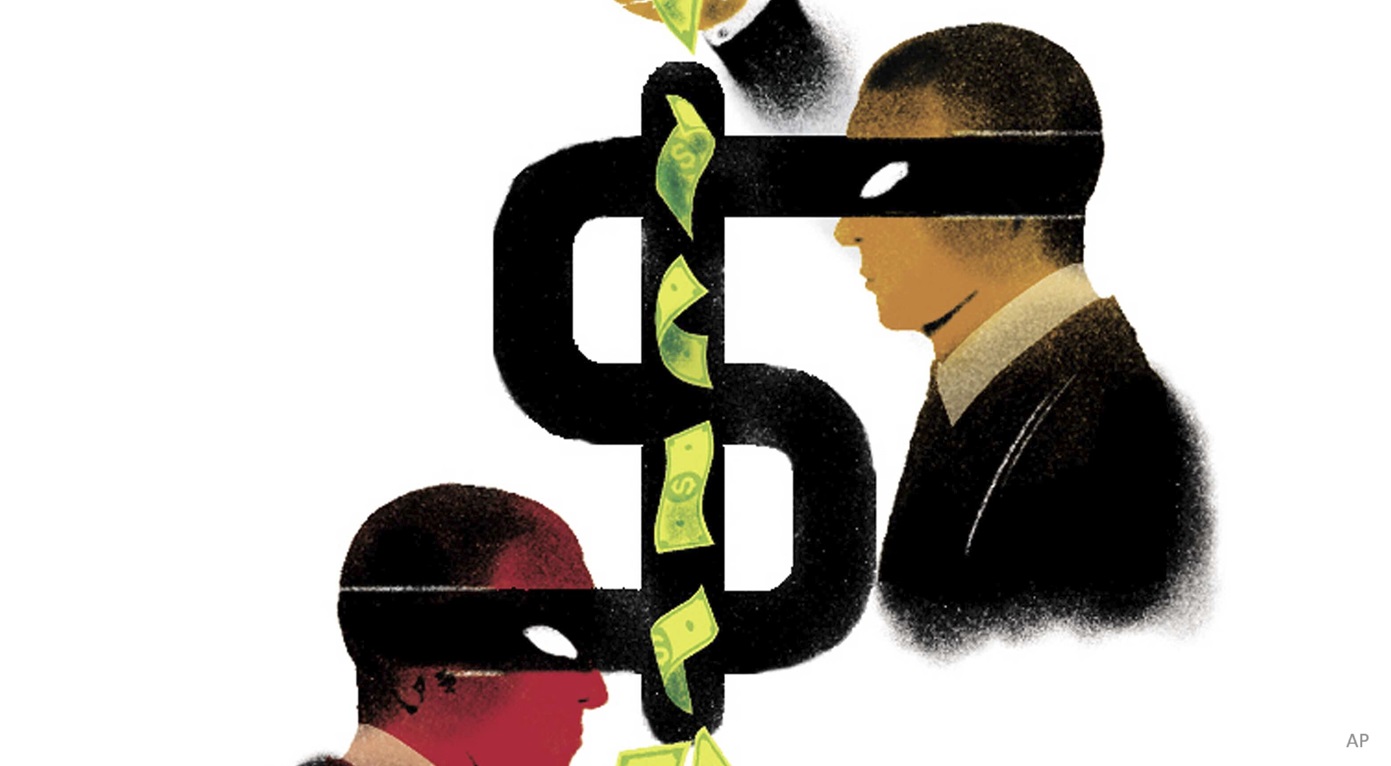On the face of it, accessing retirement savings early seems irresponsible, the result of inadequate financial planning earlier in life. But in fact, in some cases it actually might be a wise move -- even for those who don't need the cash.
A registered retirement savings plan is supposed to be a sacred vault, a pool of savings to be tapped only when the time comes to fund a prosperous retirement. Traditionally, this means age 65 -- which remains the benchmark retirement age for many people. It's also the age at which some government programs automatically take effect, notably Old Age Security (OAS).
You can withdraw money from an RRSP at any time, and have tax withheld by the institution that holds your account. However, when you approach retirement there are more organized withdrawal options to consider.
While some retirees opt to receive a guaranteed income from their RRSP savings by purchasing an annuity, most convert their RRSP to a registered retirement income fund (RRIF). This allows them to continue to manage the investments they had in their RRSP, but now within an account that is designed to provide annual income.
Conventional wisdom
The question is: When to convert your RRSP? The law gives you until the end of the year in which you turn 71 to collapse your RRSP and begin receiving retirement income through a RRIF or annuity. (You are permitted to deregister an RRSP in its entirety, but if you did you'd have to pay tax on the entire amount when you file your income-tax return for that year.)
Regardless of income need, conventional wisdom says the money should remain in an RRSP until the last minute, thus maximizing the tax deferral, since the money within is not taxed until it's withdrawn. A RRIF works in much the same way and in effect is an extension of an RRSP, with one important difference: You must withdraw minimum amounts each year, based on a percentage of the assets held in the fund. The percentage amounts increase each year, in theory to keep up with a rising cost of living. Thus a RRIF inherently offers less tax deferral than an RRSP.
If you aren't retired, why convert to a RRIF before the age-imposed deadline? Apart from supplementing your income, the reasons to do so are related mostly to tax planning. In all cases, your decision should be based on some serious number-crunching that takes into consideration your current financial situation and related tax issues, and where you expect to be financially and tax-wise after you retire.
The idea is that you would have hopefully contributed to your RRSP when you were in a high bracket -- and thus gain a valuable tax deduction as well as let the savings grow on tax-deferred basis -- and then withdraw funds when your rate is lower.
"Most people don't understand how tax brackets work, but understanding this is crucial to making the right decision when it comes to this," says Lorn Kutner, a chartered accountant and partner with Deloitte. The analysis could lead you to convert only a portion of your RRSP to a RRIF, he says. "You have to plan ahead to determine how much you might need in a RRIF to generate additional income to take advantage of your lower tax rate."
You may need the income now
An early RRIF start-up might be necessary if you need some extra income because you are semi-retired and working part-time, or have moved into consulting work. How much you take in income through a RRIF should be carefully weighed against the impact this might have on your income-tax bracket. Obviously, if you opt to take a hefty amount from a RRIF, this is likely to boost your taxable income into a higher tax bracket.
"If you're comfortable you aren't dipping too far into your retirement savings, it can make sense to take some RRIF income during lower-income years, even though you haven't yet retired, says Howard Kabot, vice-president, financial planning at RBC Wealth Management Services. "By doing so you would be applying the [RRSP tax-deferral] theory in the way it was intended -- withdrawing retirement savings when you are in a lower tax bracket than when you were in your higher income-earning years."
Pay less tax on proceeds now
Another common reason to tap into retirement savings early is if you believe you will move into a higher tax bracket in the future. For example, if you are a middle-income earner and nearing your 60s -- or younger, for that matter -- and anticipate receiving a sizeable inheritance in the not so distant future, it might make sense to start taking income through a RRIF now. The proceeds presumably would be taxed at a lower rate than if you waited until age 71 to start receiving RRIF income -- by which point you might already have begun to receive (or soon to receive) an inheritance and thus be in a higher tax bracket due to the income received from the inherited assets. As mentioned above, you would need to calculate at what level this supplemental income would put you in a higher tax bracket, and thus defeat the purpose of withdrawing.
Pension income credit
At age 65, there is another reason to consider taking income through a RRIF: The 15% federal pension-income credit. This provides annual tax savings of up to $300, based on the maximum eligible amount of $2,000 in pension income. If you have a spouse and you both are 65 or over, the pension credit could produce tax savings annually of up to $600 (15% of $4,000) between the two of you, assuming you both received qualifying pension income. Eligible pension income is that received from a private source such as a RRIF, annuity or registered pension plan. (Canada/Quebec Pension plan, Old Age Security and Guaranteed Income Supplement income are not eligible.)
If claiming the pension credit is the sole reason for starting a RRIF, you would need to hold only enough money in that account to produce $2,000 in annual pension income. Thus, at age 65 you could transfer, say, $12,000 to a RRIF from your RRSP to be able to report six years of $2,000 annual pension income on your tax returns and thus qualify for the credit. Alternatively, you could ensure enough is transferred to and subsequently withdrawn from the RRIF each year to meet the pension-income requirement.
However, Kabot suggests the pension credit alone is probably not sufficient reason to start a RRIF. "While in principle it makes sense to take advantage of the pension-income credit as early as possible -- if there's money on the table you should take it -- at the same time I don't think it merits building a whole philosophy around this."
Beware the clawback
A more important consideration at age 65 is the beginning of OAS payments and the related clawback of this benefit for higher-income individuals.
"If you're age 65 and over, you need to consider the impact of this additional income on the Old Age Security clawback," says Kabot. "If your net income is above approximately $70,000, you have to repay some or all of your OAS when you file your tax return." (Net income is an amount calculated on your tax return that includes various deductions such as RRSP contributions, union and professional dues, child-care expenses, support payments and investment-carrying charges.)
Income to TFSA
If you set up a RRIF purely for tax-planning purposes and don't need the money to supplement your pre-retirement income, Deloitte's Kutner suggests putting the proceeds into a tax-free savings account. This assumes you have unused contribution room in a TFSA -- which currently amounts to $31,000 if you've never contributed to one, based on annual contribution limits of $5,000 in 2009 to 2012 and $5,500 in 2013 to 2015. "You can invest RRIF income in a TFSA for you and your spouse -- or children aged 18 or over -- and you are back into a tax-deferred situation," Kutner says.
Or just retire!
You may decide that, after making the calculations and closely considering your future (perhaps for the first time), you are better off fully retiring in your early 60s. Says Kabot: "You're looking at OAS soon, taking the pension-income credit and converting your RRSP to a RRIF, so it's understandable that you might think: I'm going to have to pay tax on future earnings, so I could probably have the same income and stop working. If you're facing that decision, it's a difficult one -- but it's a nice problem to have."
"Instead of focusing on continuing to work because I don't want to pay tax now on money that I withdraw from my retirement plan, I could say I am going to pay tax either way -- one lets me take it easy and play golf every day, while other one forces me to get up every day and go to work."








:quality(80)/cloudfront-us-east-1.images.arcpublishing.com/morningstar/54RIEB5NTVG73FNGCTH6TGQMWU.png)






